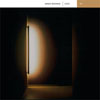Asmus Tietchens, "Soirée"
 Tietchens, one of my favorite sound artists, approaches this new album from a different tact than his others. Rather than composing with new sounds, he instead chose to recycle existing material and recordings through various processing techniques, some receiving up to ten reinventions before completion, resulting in one of his most sparse, yet diverse works.
Tietchens, one of my favorite sound artists, approaches this new album from a different tact than his others. Rather than composing with new sounds, he instead chose to recycle existing material and recordings through various processing techniques, some receiving up to ten reinventions before completion, resulting in one of his most sparse, yet diverse works.
Many of the pieces appear in various mutated forms, sometimes feeling linked to one another, other times appearing as stand-alone works.For example, "L2RB" and "L2RD" work together almost as a single composition, but while the former opens with sparse and quiet sounds and digital processing, the latter takes the erratic digital noises and converts them to organic, piano like synth pulses.The dichotomy works perfectly, balancing the digital alienation of the first with the inviting, relaxing sounds of the second.
"L2RC," which uses some of the same tonal elements as the other two similarly titled tracks, but frames those elements in an entirely different way.Both "p1" and "p1B" are also linked conceptually, with an emphasis on distant, subtle waves of static.On "p1B," however, Tietchens adds erratic swells of violent feedback that are startling enough to make focusing on the quiet details difficult.
"Nox 3" focuses less on quiet, far-off noises and instead opts for a series of electronic blips and stutters, giving a more collage-sense and also feeling in-line with some of Tietchens work of the early 1980s."Nox 1" is more deliberate, emphasizing clinking sounds and shrill, glassy, but melodic passages of sound.
Closer "p2A" pans busy, processed elements from left to right, busy and chaotic but never lacking form or structure.There is a rhythmic click quite low in the mix that almost sounds like cymbals from a drum machine that are filtered and processed into near oblivion, but that may be entirely a figment of my imagination.
One of the side-effects of this meticulous processing and sonic recycling is that, with abstractions of abstractions, the result is a series of sounds that is so far removed from convention that they seeming become a different beast entirely.In the hands of such an expert craftsman such as Asmus Tietchens, the formless sounds are given shape and structure.Even though they are relatively sparse, these compositions reveal new details with each listen.
samples:
 



